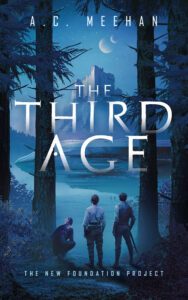In the last post, I wrote about how listening to the text helps you notice different things as you edit for style. For me, that’s a good transition from thinking about structural elements that hone the story to the language elements that hone the writing. The other major component of my style edit goes deeper into the details, and for this, it’s back to the words on the page.
There are plenty of stylistic choices that need to be made in business writing, but I’ll focus here on long fiction.
Even in a novel with tens of thousands of words, some words or phrases can call attention to themselves and distract the reader. The style edit is a great opportunity to catch those, and the “search” function is a gift of digital writing. With the full draft in one document, I’ll do a series of searches and use the results to guide me to areas that need stylistic improvement. Here are some of the things I search for.
- Shortcut words. Many times in the flow of a first draft, characters do a lot of nodding, sighing, shrugging, and so on. I find I write that sort of thing almost as a placeholder for a more evocative description of a character’s reaction. I search for those words, and make the adjustments. Sometimes, a sigh or nod really is what I want, but looking at each instance makes me consider what I really mean.
- Overused descriptions. For example, I will search on a phrase like “brown eyes.” Different authors and genres have different preferences and expectations, but I generally don’t want every character’s features or clothing or mannerisms described over and over.
- Pet phrases. I’m guessing most readers have had the experience where they notice that an author has a pet phrase. Sometimes it’s amusing, and sometimes irritating, and search can help writers avoid it.
- Special words. As a reader, I enjoy encountering some new words, and as I writer I like to stretch my active vocabulary a bit. However, readers notice those words, so some caution is required. If I use an unusual word, I will run a search to see if I used it more than once, and if editor-me agrees with writer-me that it’s appropriate where I’ve used it.
Scrivener (and I’m sure other writing software) has many powerful features that are incredibly helpful—like the ability to highlight all adjectives or all direct speech—but the humble search function can help the self-editor put the spotlight on places where stylistic choices are needed.
Previous posts in this series:
- Part 1: The most important step when editing your own writing
- Part 2: The content edit: editing for coherence
- Part 3: The structural edit: following the thread
- Part 4: The style edit, part 1: the sound of style




